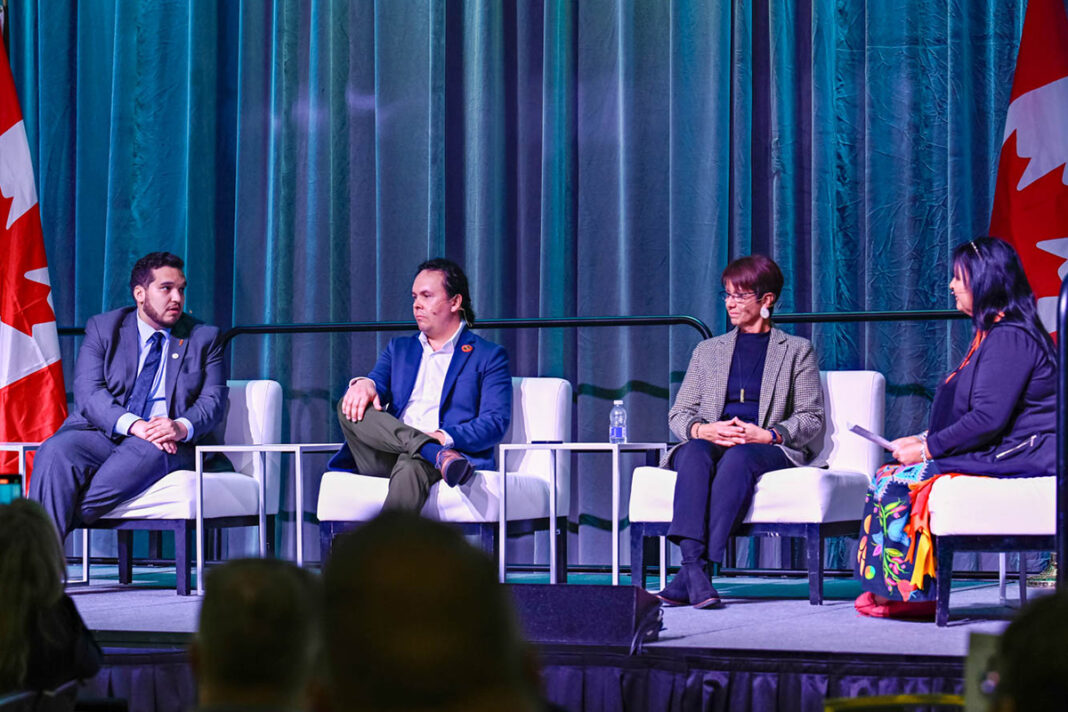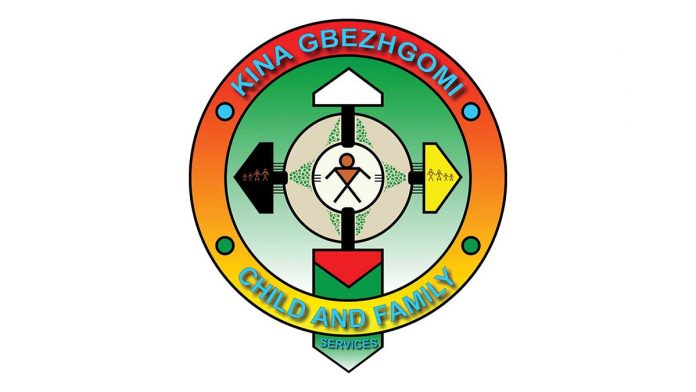OTTAWA—Island businessman Nishin Meawasige was recently invited to appear on a panel discussing The Road Ahead—Building bridges for the future.
Mr. Meawasige, co-owner and partner of Manitoulin Brewing Company was joined by moderator Kallie Wood, president and CEO of the National Circle for Indigenous Agriculture and Food (NCIAF) and fellow panelists Jolene Johnson, CEO and founder of Wabanaki Maple, Isaiah Robinson, deputy chief councillor of Kitasoo Xai’xais Nation and general manager of the Kitasoo Development Corporation in British Columbia.
The panelists were part of the Future of Food event held last week at Ottawa’s Shaw Centre and during their 45-minute panel discussion, they explored what industry stakeholders are now calling “a generational opportunity available to entrepreneurs, businesses and organizations interested in entering the fields of agriculture and agri-processing.”
“Most importantly, it was about elevating our current local farmers and food producers and letting the industry at large know that Manitoulin Island and Northern Ontario has much to contribute to this industry,” noted Mr. Meawasige. “The panel was about recognizing the prominent role Indigenous individuals, communities, businesses and associations have in helping advance this industry towards regenerative and wholistic approaches at scale. Indigenous traditional teachings and beliefs are needed more now than ever to support local, regional, national and global food security.”
Ms. Johnson’s East Coast company, Wabanaki Maple, creates a unique maple syrup product by aging the syrup in bourbon barrels, while Mr. Robinson oversees the operations of a British Columbia salmon farm. Mr. Meawasige’s operation, Manitoulin Brewing Company, has garnered impressive awards for their beers named for iconic Island features.
“There were 750 participants at the conference, including university students, multi-national corporations, businesses and government officials and educational institutions” drawn from across the continent, he noted,
Indigenous communities harbour a largely under tapped resource of labour, an important consideration in these days of labour shortages. “It was also a great opportunity to showcase and speak on Indigenous agricultural practices and their role in sustainability,” he noted. Those practices go back millennia, such as the mutually advantageous interaction of the famed three sisters, beans, squash and corn—traditionally grown together in Indigenous agriculture.
The Future of Food conference attracted an impressive battery of speakers, including Michael McCain of Maple Leaf Foods, Bob McDonald, host of CBC’s Quirks and Quarks, The Honourable Lawrence MacAulay, federal minister of agriculture and agri-food, Alanna Koch, board chair of the Global Institute for Food Security and a host of others.
“Manitoulin Island provides a perfect example of the kinds of things that are taking place in creating sustainable agriculture and agri-food production,” noted Mr. Meawasige, who said he was pleased to have the opportunity to introduce Manitoulin on a national stage—but he noted that a remarkable number of people he met at The Future of Food were actually aware of Manitoulin Island. “I was surprised at how many people not only had already heard about Manitoulin, but knew where it was,” he chuckled.
Indigenous communities harbour a large workforce that despite being highlighted in the Ontario Growth Plan remains far too underutilized, noted Mr. Meawasige. First Nations and Indigenous communities not only represent one of the largest available labour forces in the North, they also have a wealth of traditional knowledge on how to approach agriculture from a sustainable perspective that remains largely untapped.
The benefits of encouraging greater Indigenous participation in the agricultural industry are immense—with estimates of a boost exceeding $1.5 billion in primary agriculture’s contribution to the nation’s gross domestic product.
That is not to say there are not already many Indigenous farmers out there—there are 5,405 Indigenous farmers according to the last census. That represents 2.1 percent of the total farm operators in Canada but falls short of the five percent Indigenous people make up of the entire population—meaning there is plenty of room for expansion—to hit parity, there will need to be 7,731 Indigenous farm operators, roughly a 140 percent increase. The increase from the previous census was five percent, so there is a far way to go yet.
GDP related to Indigenous primary farming operations was estimated to be $351 million, or one percent of Canada’s primary agriculture GDP in 2021 against the GDP contribution of non-Indigenous farm operations level at $35.9 billion. The estimated primary agriculture GDP per farm operator was $64,900 for Indigenous and $140,100 for non-Indigenous, for a GDP per farm disparity of $75,200—a result of historical challenges related to the Indian Act, the ‘60s Scoop and other social barriers that have kept Indigenous communities out of the economic prosperity loop.
“This isn’t about me,” insists Mr. Meawasige as the interview concludes, but through forums such as the The Road Ahead—Building bridges for the future the word on Indigenous agriculture is getting out there and that is thanks in part to successful Indigenous entrepreneurs such as stepping up to offer insight to the industry.





